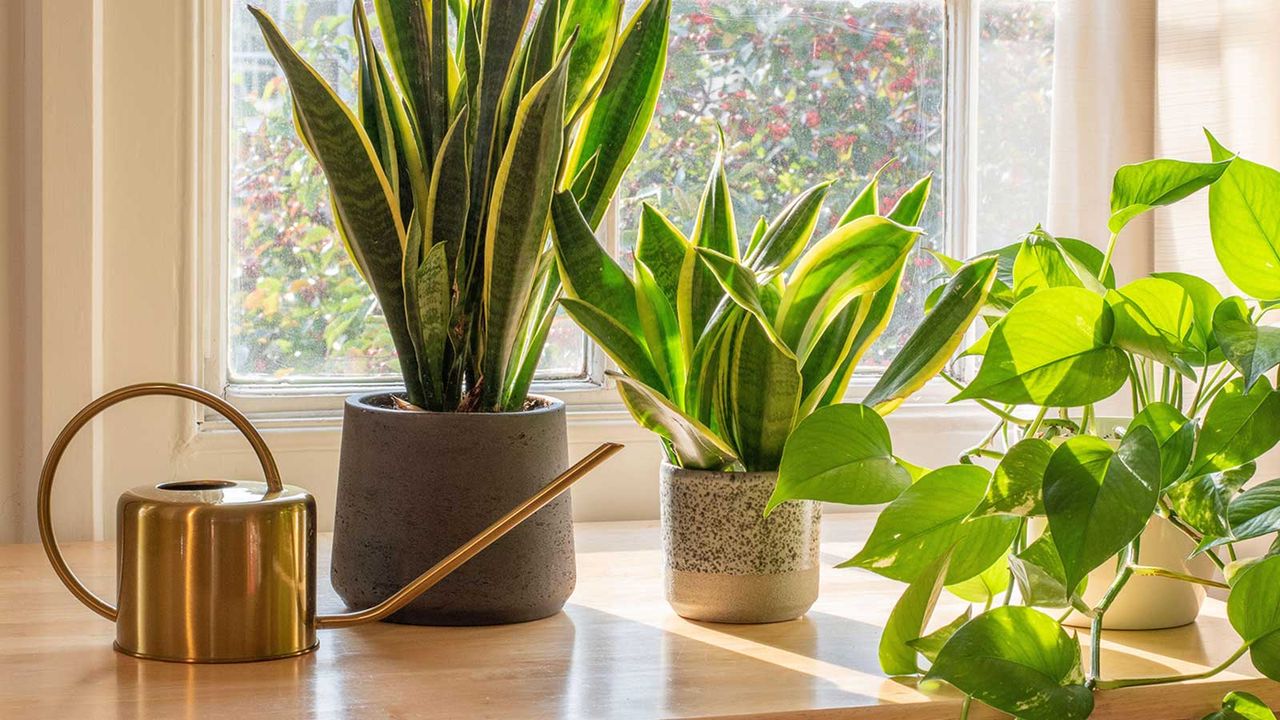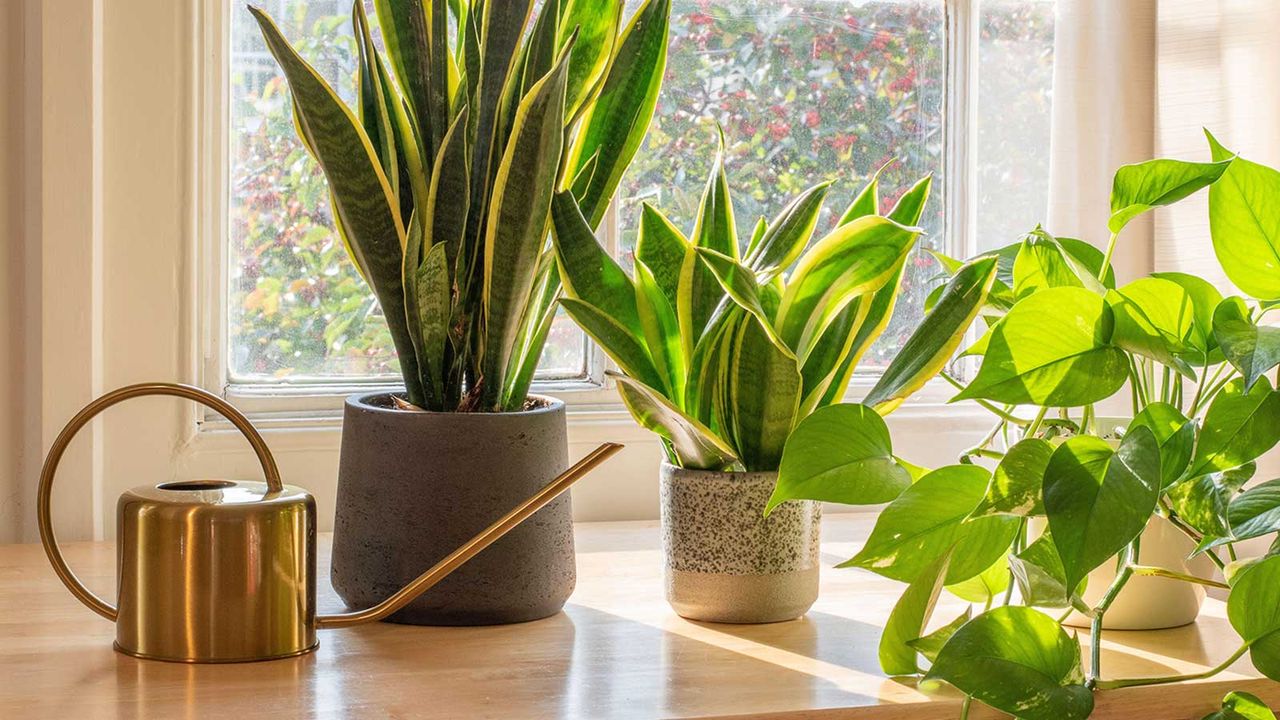How Often Should You Water a Snake Plant in Winter? This question often arises as the seasons change, and the colder months bring a shift in your plant’s needs. Snake plants, known for their resilience, require a different watering approach during winter to thrive.
While these low-maintenance beauties are renowned for their drought tolerance, understanding their winter watering needs is crucial to prevent overwatering and ensure healthy growth.
Several factors influence the frequency of watering a snake plant in winter. The size of the pot, the type of soil, the temperature, humidity levels, and the amount of light exposure all play a role. Understanding these factors will help you determine the ideal watering schedule for your snake plant during the winter months.
Snake Plant Watering Basics
Understanding the watering needs of your snake plant is crucial for its health and well-being. Overwatering is one of the most common mistakes snake plant owners make, which can lead to root rot and other problems.
Factors Influencing Snake Plant Watering Frequency
Several factors influence how often you should water your snake plant, ensuring you provide the right amount of moisture for optimal growth.
- Pot size: Larger pots hold more soil, which takes longer to dry out. Therefore, snake plants in larger pots require less frequent watering than those in smaller pots.
- Soil type: Well-draining soil, like a mix of potting soil, perlite, and sand, allows excess water to escape, preventing waterlogging. This type of soil dries out faster, requiring more frequent watering compared to denser soil mixtures.
- Temperature: Warmer temperatures increase evaporation rates, leading to faster soil drying. Therefore, snake plants in warmer environments need more frequent watering than those in cooler environments.
- Humidity: High humidity can increase the rate of soil moisture loss. Snake plants in humid environments might require more frequent watering than those in dry environments.
- Light exposure: Snake plants in bright, indirect light tend to grow faster and use more water, requiring more frequent watering than those in low-light conditions.
Winter Watering Considerations
Winter brings about changes in the environment that directly impact the watering needs of snake plants. These changes include lower temperatures and shorter daylight hours, which can significantly affect the plant’s growth rate and water absorption.
Impact of Lower Temperatures and Shorter Daylight Hours
Lower temperatures and shorter daylight hours during winter can significantly impact the growth rate of snake plants. These changes directly affect the plant’s ability to absorb water and nutrients. In winter, snake plants enter a period of dormancy, slowing down their metabolic processes, including growth.
This means they require less water than during warmer months.
Determining how often to water a snake plant in winter depends on factors like temperature, humidity, and the pot’s size and material. Just like choosing the right pot for a bonsai tree is crucial for its health and aesthetics, Bonsai Pots: A Complete Guide to Picking the Right Style , selecting the appropriate pot for a snake plant can influence its water retention.
A terracotta pot, for example, will dry out faster than a glazed ceramic pot, requiring more frequent watering in winter.
- Reduced Photosynthesis:Shorter daylight hours lead to reduced photosynthesis, the process by which plants convert sunlight into energy. This reduced energy production means the plant needs less water for growth and other metabolic activities.
- Slower Water Absorption:Cooler temperatures slow down the plant’s metabolism, including the rate of water absorption through its roots. This means the plant needs less frequent watering to prevent overwatering.
Overwatering During Winter
Overwatering during winter is a common problem for snake plants. The reduced growth rate and slower water absorption make the plant more susceptible to root rot. This occurs when the soil remains constantly wet, creating an environment conducive to fungal growth.
- Signs of Overwatering:Overwatering can lead to various symptoms, including yellowing leaves, mushy stems, and a foul odor from the soil.
- Prevention:To prevent overwatering, it’s crucial to allow the soil to dry out completely between waterings. This ensures the roots have enough time to absorb the available water and avoid becoming waterlogged.
Signs of Underwatering and Overwatering
While snake plants are known for their resilience and ability to tolerate some neglect, it’s crucial to be aware of the signs of both underwatering and overwatering. Recognizing these signs can help you maintain your snake plant’s health and prevent any irreversible damage.
Signs of Underwatering
Underwatering is a common problem for snake plant owners, especially during the winter months when the plant’s growth slows down and its water requirements decrease. Here are some key signs to watch for:
- Wilting Leaves:The most noticeable sign of underwatering is wilting leaves. Snake plant leaves, which are typically stiff and upright, will start to droop and become soft. This is due to the plant losing turgor pressure, which is the internal water pressure that keeps the leaves firm.
- Leaf Browning:As underwatering continues, the leaves may start to brown at the tips or edges. This browning is caused by the plant’s attempt to conserve water by sacrificing its leaf tips. The browning can progress inward, eventually affecting the entire leaf if the underwatering is not addressed.
- Leaf Curling:Underwatered snake plants may also exhibit leaf curling, where the leaves curl inwards, almost as if they are trying to protect themselves from further moisture loss.
Visual Example |
Description |
|---|---|
[Image: A snake plant with drooping, wilting leaves] |
Wilting leaves are a clear sign of underwatering. The leaves lose their firmness and droop noticeably. |
[Image: A snake plant with brown tips and edges on its leaves] |
Leaf browning at the tips and edges is another indication of underwatering. This is caused by the plant’s attempt to conserve water. |
[Image: A snake plant with curled leaves] |
Curled leaves are a sign that the plant is trying to conserve moisture by reducing its surface area. |
Signs of Overwatering
While underwatering is more common, overwatering can also be detrimental to your snake plant. Here are some signs to look out for:
- Yellowing Leaves:Overwatering often leads to yellowing leaves. This is because the roots are unable to absorb all the water, leading to a buildup of moisture and a lack of oxygen. This can cause the roots to rot and the leaves to turn yellow.
- Root Rot:Overwatering can lead to root rot, a serious condition that can kill your snake plant. Root rot occurs when the roots are constantly wet and lack oxygen, leading to the breakdown of root tissue.
- Soggy Soil:The most obvious sign of overwatering is soggy soil. If the soil remains wet for extended periods, it’s a clear indication that you are watering too frequently.
Visual Example |
Description |
|---|---|
[Image: A snake plant with yellowing leaves] |
Yellowing leaves can be a sign of overwatering. The roots may be unable to absorb all the water, leading to a buildup of moisture and a lack of oxygen. |
[Image: A snake plant with root rot] |
Root rot is a serious condition caused by overwatering. The roots become mushy and black, and the plant may eventually die. |
[Image: A snake plant with soggy soil] |
Soggy soil is a clear indication that you are watering too frequently. The soil should be allowed to dry out between waterings. |
Proper Watering Techniques
The key to keeping your snake plant healthy in winter is to water it only when the soil is completely dry. This allows the plant to thrive even with reduced sunlight and lower temperatures.
Checking Soil Moisture, How Often Should You Water a Snake Plant in Winter?
To determine if your snake plant needs water, use the finger test. Insert your finger about 2 inches into the soil. If the soil feels dry, it’s time to water. If it’s still moist, wait a few more days.
Watering Techniques
Watering your snake plant effectively is essential to its health. Here are some tips to keep in mind:
- Use lukewarm water. Cold water can shock the plant’s roots.
- Water thoroughly until water drains from the drainage holes. This ensures that the entire root system is hydrated.
- Avoid overwatering. Overwatering can lead to root rot, which can be fatal to your snake plant.
Additional Winter Care Tips

While general guidelines exist, the frequency of watering a snake plant during winter depends on factors specific to each plant and its environment. Adjusting your watering schedule based on individual plant needs is crucial for maintaining a healthy snake plant.
Factors like the size of the plant, the type of soil, the amount of light it receives, and the temperature of the room all play a role in how often your plant needs water.
Winterizing Snake Plants
Protecting your snake plant from cold drafts and maintaining adequate humidity levels are key aspects of winterizing.
Determining the ideal watering frequency for a snake plant in winter depends on factors like temperature, humidity, and the pot’s material. Just as the right pot design is crucial for the health of a bonsai tree, as discussed in this article on Bonsai Pot Designs: Choosing the Best for Indoor Trees , the pot’s material and drainage can significantly influence how often you need to water your snake plant.
A terracotta pot, for example, will dry out faster than a glazed ceramic pot, requiring more frequent watering.
- Moving Plants Away From Cold Drafts: Snake plants are susceptible to damage from cold drafts, which can lead to leaf browning and wilting. To prevent this, move your snake plant away from windows, doors, or any other areas where cold air may enter.
- Maintaining Adequate Humidity Levels: While snake plants tolerate dry conditions, they thrive in slightly humid environments. During winter, when indoor air tends to be drier due to heating systems, you can increase humidity by placing a humidifier near your plant or by grouping plants together.
- Avoiding Fertilization During Winter: Snake plants are dormant during winter, meaning they don’t actively grow. Fertilizing during this period can lead to nutrient buildup in the soil, which can harm the plant. It’s best to hold off on fertilizing until spring when growth resumes.
Wrap-Up: How Often Should You Water A Snake Plant In Winter?
Watering a snake plant in winter requires a delicate balance. By understanding the signs of underwatering and overwatering, and by implementing proper watering techniques, you can ensure your snake plant remains healthy and vibrant throughout the winter months. Remember, consistent observation and a gentle touch will go a long way in keeping your snake plant thriving.
Answers to Common Questions
How often should I fertilize my snake plant during winter?
It’s best to avoid fertilizing your snake plant during winter, as it’s in a dormant state and doesn’t need additional nutrients.
Can I use cold water to water my snake plant in winter?
While snake plants can tolerate some fluctuations in water temperature, using lukewarm water is generally recommended. Cold water can shock the plant’s roots.
What if my snake plant is in a very dry environment?
If your home has very low humidity, you may need to water your snake plant slightly more often in winter. Consider using a humidifier to increase humidity levels.
Should I repot my snake plant in winter?
It’s best to avoid repotting your snake plant during winter. Wait until spring when the plant is actively growing.
